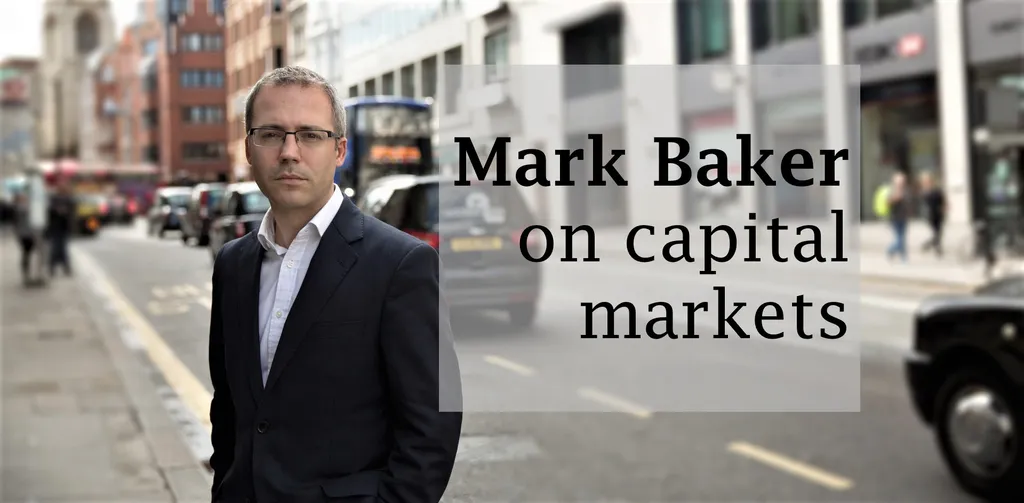September saw $53 billion-equivalent of investment-grade corporate bond issuance from Europe, the Middle East and Africa borrowers, according to Dealogic data, making it the biggest month of the year.
September hasn’t been the biggest month of the year for those issuers since 2019. It has only happened six times since the global financial crisis of 2008.
The month was also the biggest for issuance since March 2022 – and only three of the last 36 months have been bigger.
Even more remarkably, it has happened now after a steep 18-month rise in rates – that March 2022 previous high was no coincidence, given the hiking cycle that has followed it.
And so, what September’s glut obviously does not tell us is that issuers are rushing to get in before an expected rise. While we may not be quite at the very peak yet, we are surely very close.
But what it does perhaps tell us is that issuers seem to be increasingly pragmatic about how flat that peak is going to look and are reaching the conclusion that it is better to come now than wait for an even more crowded field, when the refinancing pressure has really started to bite.
Recent activity has something to teach us about investors’ appetite too. One thing is certain: they are happy to take on yield risk. You are seeing this at both ends of the curve, with buyers piling into short-dated paper, the most sensitive to policy decisions, as well as the kind of longer-dated tranches that could well be expected to harbour volatility in response to concerns about the macroeconomic picture.
Holding pattern
From this perspective, there is an advantage to rates policy taking on a feeling of being in something of a holding pattern right now. What investors should have taken away from recent central bank meetings on both sides of the Atlantic is that they should be looking at the rates element of their calculations as something enduring, rather than focusing on second-guessing the precise timetable for downward – or even further upward – movements.
And, on the whole, they appear to have done just that, with good support shown for the whole range of primary issuance brought by European corporates since the summer break, whether senior or subordinated, highly rated or down to triple-B.
The volume itself is notable, given that expectations in the summer had been fairly muted for the second half of the year, given a lack of urgent refinancing pressure and slim pickings on the M&A financing front.
And in that context the continuing strength of demand is also telling – buyers had been expected to show good support for the first deals post-summer precisely because of the forecasts of lower supply to come. But they have also not shied away as that supply has stayed healthy. In fact, order books have been bulging – demand for a recent €1.75 billion hybrid bond sold by Germany’s Bayer on September 20 topped out at nearly €12 billion before easing to just below €9 billion.
It would be a brave or extremely confident name to interpret the reception that deals are seeing right now as a sign that investors are ready to be squeezed
Bayer was the standout of the month, but away from the heavyweights there has also been plenty of debut diversity: look at triple-B rated Fresenius, popping into the Swiss franc market like an opportunistic day-tripper on September 25 – even if it did have to pay up in euros later in the week. That its SFr275 million ($299 million) was so well received was testament to the growing allure of Swissies as something more than a niche option.
And the results have been all the more impressive for the fact that investors have had to put out of their minds some turbulent times in government bond markets.
For Giulio Baratta, head of investment grade finance in EMEA debt capital markets at BNP Paribas, a similar dynamic is being seen on the issuer side too.
“This is not short-termism in the negative sense, but more a pragmatism that has incentivised some companies to get things done before 2024,” he tells me. “And with a relatively tight credit spread environment, it can be worth issuers prefunding a little more of what might even have been earmarked for 2025.”
It is worth bearing in mind, however, that even though some issuers are managing to get deals away at tighter new issue concessions than at some points in the past, the overall picture on concessions is that they are staying fairly high. That is in part a reflection of the point about previous supply expectations – investors are obviously happy to play, but with activity running a little higher than had been anticipated, there needs to be enough fair-value premium for them to stay interested.
Stability signal
And that is also reflected in the secondary market, which has seen recent deals trade fairly stably but certainly not spectacularly – a trend that doesn’t seem to be sending out any signals that the current appetite for risk extends far enough to drive deals to tighten much.
That stability might be enough to convince more borrowers to come to the market, but it would be a brave or extremely confident name to interpret the reception that deals are seeing right now as a sign that investors are ready to be squeezed.
And not all bankers think that the prospects for the rest of the quarter are much different to the low expectations that existed in the summer, whatever has happened in September.
All of which also puts quite a bit of focus on the third-quarter earnings season, because the absence of a clear directional view on rates creates a vacuum that could usefully be filled by some steer on real-economy performance. Equity volatility in the US is a constant worry too, to the extent that it feeds into concerns about the viability of a soft landing.
Some bankers on the conference circuit have been gently trying to talk up the prospects for global capital markets for the remainder of the year. Europe’s September certainly gives cause for cautious optimism, but there is an awful lot still to digest.




